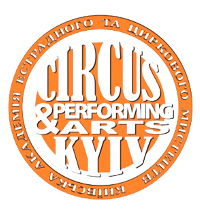The performing arts of China in the dialogue of cultures as an example of the opera “The first emperor” by Tang Dung
Abstract
In the context of the formation of the stage culture of China, a certain ritualism arises in its functioning. First of all, this is explained by the tendency to preserve one's own unique cultural and artistic codes, which are the carriers of the nation's philosophical outlook. It is emphasized that there are certain differences between the development of European stage art and Chinese stage art, which primarily lie in different cultural and historical prerequisites of development. At the same time, similar components are singled out in the reasons that prompted the renewal and creation of intercultural dialogue (the search for a new artistic language, new means of expression, etc.). The dialogue between the cultures of the West and the East is considered from the standpoint of the mutual influence and interaction of the leading cultures of the two artistic worlds. In stage art, a genre of theatrical-musical action is singled out, namely, operatic art, which actually allows overcoming conventions regarding the perception of any artistic phenomenon. The appeal to Tan Dun's work is justified by the fact that his opera “The First Emperor” can be interpreted as a conceptual and holistic phenomenon, which is based on philosophical thinking in accordance with Confucianism – “one plus one will be one” – demonstrates a vivid example of the formation of a new artistic product from positions of interpenetration, interaction and assimilation of various stylistic components of East-West art. Tan Dun is one of the brightest representatives of the Asian avant-garde and the Chinese “New Wave”, combining national traditions and the phenomena of modern Western art in his work. The conclusions state that the composer synthesizes Western opera and jingju at the level of language (Chinese, English), stage design, type of characters and actors, and musical features in terms of vocal and instrumental performance.
References
甄帥。 中國“模範革命歌劇:流派-風格特徵”。 成都:四川大學學部 2019. 240 頁
李先民。 豫劇洛古今。 河南:人民出版社。 1983. 97 頁
劉進。 中國民族歌劇:1920-1980 年代。 西安:陝西師範大學出版社. 2007. 215 頁
М'язова І. Міжкультурна комунікація: зміст, сутність та особливості прояву (соціально-філософський аналіз). Київ: КНУ ім. Т. Шевченка, 2008. 182 с.
彭江明。 譚盾歌劇《秦始皇》音樂元素分析. 劇院建。 2018. 第 15 期. 抄送. 65-78
郝卓思。 對中國戲曲未來發展的思考,從唐棟的歌劇秦世煥開始。 生活 2018. 107-120
鍾子霖。 現代歐洲與歐洲的關係 1945年以來的中國音。 民間音樂,第10期,1984. 47-53
楊恩魂。 秦士環戲曲綜合研究 中西文化。 新疆師範大。 烏魯木齊 2011. 43 頁
閆思雅薇。 京劇聲樂表。 上海:遠東出版社,2017. 377頁.
姚逸群。 由京劇轉移繼承而來。 黃忠(烏塔納音樂學院學報,2009年第4期,71-79。
Jiang, Jing (1991). The Influence of Traditional Chinese Music on Professional Instrumental Compositionю. Asian Music. 22, 2, 83-96 [in English].
Kors S. Tan Dun’s The First Emperor Тan Dun. The First Emperor: Booklet to DVD.The Metropolitan opera. London: EMI Classics, 2008. Pр. 6-7.
Lee J. C. Tan Dun.The New Grove Dictionary of Music and Musicians: in 29 vols. 2001. Vol. 25. Pр. 64-65.
Pronko L. Theatre East & West: Perspectives towards a Total Theatre. Berkeley.Los Angeles. London: University of California Press, 1967. 188 р.

 ISSN
ISSN  ISSN
ISSN 



